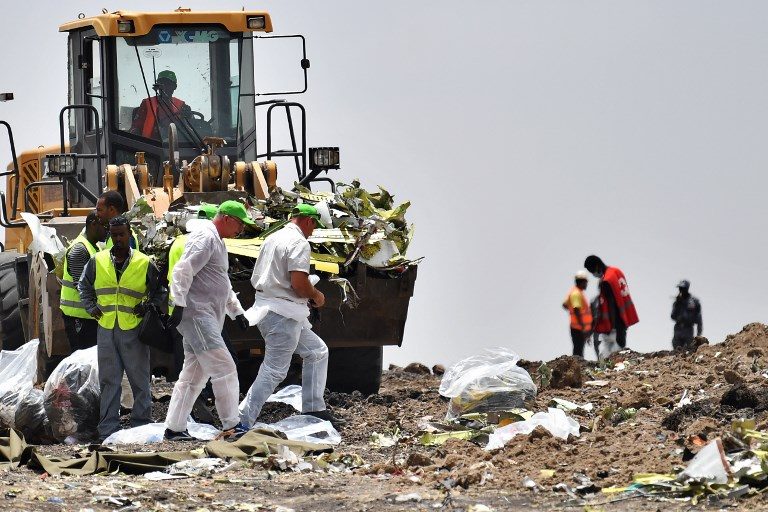SUMMARY
This is AI generated summarization, which may have errors. For context, always refer to the full article.

ADDIS ABABA, Ethiopia (UPDATED) – A preliminary report from the fatal crash of a Boeing 737 Max in which 157 people died in Ethiopia will be released this week, the transport ministry said.
“The report will most likely be released some day later this week,” Ethiopian transport ministry spokesman Mussie Yiheyes said.
Ethiopian foreign ministry spokesman Nebiat Getachew said the transport ministry would release “a preliminary report into its investigation” of the March 10 accident in which a Nairobi-bound Boeing 737 MAX crashed shortly after taking off from Addis Ababa.
The Ethiopian government gave no details on the exact timing of the release, nor hints about the report’s findings.
Nebiat initially said the report would be released Monday but the transport ministry, which is in charge of investigations, later said it would still be some days.
It was not clear Monday if the transport ministry’s preliminary report would be made public straight away, or limited to the eyes of authorities including the FAA.
The plane’s black boxes are being examined by France’s BEA air safety agency, working with American and Ethiopian investigators to determine what went wrong.
The Boeing 737 MAX 8, operated by Ethiopian Airlines, crashed on March 10, southeast of Addis Ababa.
Families in 35 nations were left bereaved when the plane went down just minutes after takeoff from the highland capital on a flight south to neighbouring Kenya, and nose-dived into a field.
A source with knowledge of the investigation has said an anti-stall system, the Maneuvering Characteristics Augmentation System (MCAS), was activated shortly before the crash.
Boeing designed the MCAS system, which lowers the aircraft’s nose if it detects a stall or loss of airspeed.
However, the same MCAS system was implicated in the October crash of a 737 MAX 8 airliner off Indonesia which left 189 people dead.
In the Indonesia crash, initial investigations found problems with the MCAS system, when sensors of the plane’s flight details sent wrong information.
The pilot had tried repeatedly to regain control and pull the nose up but the plane smashed into the sea.
Aside from the tragedies of all the casualties, the two crashes have been major blows to aviation giant Boeing, triggering the US manufacturer’s biggest crisis in decades with the MAX 8 model grounded worldwide.
Ethiopian Airlines is Africa’s largest carrier and in many ways the international face of the nation. – Rappler.com
Add a comment
How does this make you feel?
There are no comments yet. Add your comment to start the conversation.